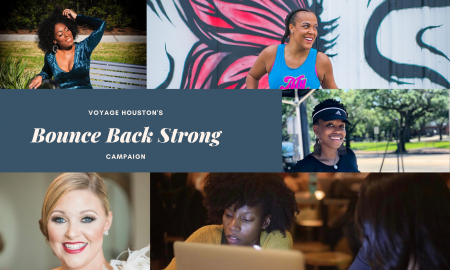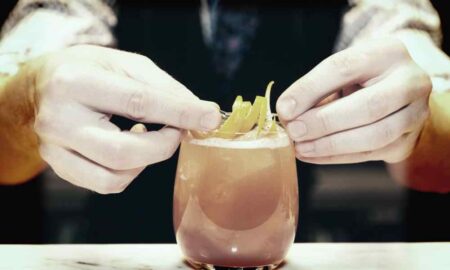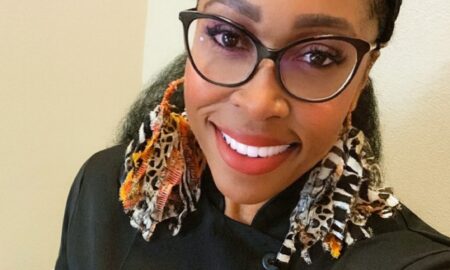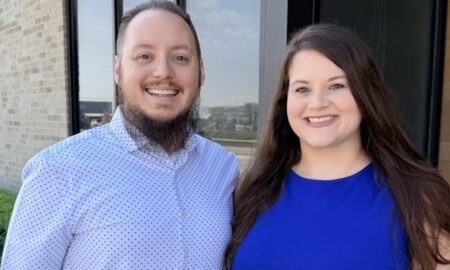

Today we’d like to introduce you to Dan Grissom.
Dan, please kick things off for us by telling us about yourself and your journey so far.
I was born and raised in a very rural part of Louisiana, surrounded by forests and animals. I studied graphic design in college at Northwestern State University in Natchitoches, LA. I liked the challenges of design but didn’t really like working with stubborn clients. So I then started getting really into my studio art classes because I had more freedom there, and I ended up going to grad school at Stephen F. Austin State University in Nacogdoches, TX to pursue a Master’s degree in Painting with a minor focus in Printmaking. I had wanted to teach art at the college level, but by the time I was done with school I decided that teaching might not be for me, at least not at this stage. I knew I wanted to make art but I didn’t really know what that would look like as far as income goes. I didn’t really know what I wanted to do, but I had some friends in Austin, so I decided to move there and then got a job as a designer at a sign company, while painting and playing music on the side.
After a few years, I found a more ideal job at Sanctuary Printshop which specialized in screen printing and letterpress. I had done a little DIY screen printing before, but this was different because I was printing for other artists and designers, so I had to learn quickly to make other peoples’ work look good. I did some design work there as well and started to occasionally tinker with some basic illustration. I had drawn and painted my whole life but illustration, in a design sense, is a very different beast. It took some time to get a handle on it. Around this time I also started following a lot of other designers that focused more on illustration, most of which did a lot of show posters for bands. It seemed that that world was more what I’d wanted out of design, which is that these artists seemed to be given a good amount of freedom. It seemed to me, most of them had built up a body of work to the point that any clients that came to them were familiar with their work and would hire them to do more of THAT.
I got wind of a job opening at another print shop called Nakatomi that was much more focused on printing illustrative works, primarily of the owner, Tim Doyle, but also many other artists whose work I was already a fan of. I started working there so I could hone my printing skills a little more and maybe learn a few things by looking at all these illustrators’ work and seeing how they set up their work for printing. I worked there as a printer for a few years while picking up more and more freelance work as well as starting to create and sell art prints. Both of those things picked up quite a bit and eventually I was bringing in enough money with those things that I could leave my day job. I built out my 2-car garage into a screen printing and letterpress studio that I call Biscuit Press. That’s where I work pretty much every day. I still do some client work, but the majority of my work is creating and printing my own screen printed art prints. I still paint occasionally as well, but that hasn’t been my focus for a few years. I plan to get back into that more this year.
Can you give our readers some background on your art?
My art at this point is primarily screen printed work on paper. It’s all very illustration based, which comes out of my background in design and gig poster art. Color choices can really make or break a piece in my opinion, so I spend a lot of time in the planning stages mocking up different color combinations and making slight adjustments until I get what I want. With screen printing, colors are limited since your hand mixing each color and printing one color at a time. Technically you could print a 50 color screen print, and I know some great artists who have, but that sounds like a nightmare to me, and I generally prefer a more limited color palette anyway. I like to visit natural places in my spare time, so nature and animals are a big inspiration for me. I’m also a songwriter, so I often work in elements of storytelling, even if they’re really subtle. In literature, I’m drawn to magical realism, and I think that comes out in my work occasionally too. I generally want people to be drawn into the image but for it to be open enough that they can have their own interpretation or connection to it.
One thing that drew me to printmaking is that since I’m printing multiples, I can keep my prices pretty low. Growing up in a working-class family, much of the art world seemed out of reach to me. The thought of my family spending $500 on a painting was preposterous. That money was going toward groceries or fixing the car. I feel like screen printing democratizes art in a way. I still sell expensive paintings sometimes, but I have original screen prints as low as $25. Because of this, I’ve had people buy my work and get excited about starting to collect art when they have never bought art before. I’ve had kids feel super proud that they could buy art from me with some money they saved from doing their chores. Stuff like that really means a lot to me, and I like that I can keep my art affordable, while it still being hand printed.
What would you recommend to an artist new to the city, or to art, in terms of meeting and connecting with other artists and creatives?
I’m definitely a loner in a lot of ways. My studio is in my garage, and I pretty much stay in there and work all the time, taking occasional breaks to take my dog on a walk. I do share my garage studio with my friend Lindsey Verrill who works in there sometimes doing letterpress and linocut work. It’s really helpful sometimes to have another artist around to bounce ideas off. But pretty often it’s just me in there talking to myself. Getting out there and doing some of the art markets has been really good for me. I get to meet other artists and find out about their work and also meet with people buying my work.
At other points in my life, having a studio space where there are a lot of other artists working has been great as well. In grad school, I had a studio in a hallway of the art building that had 15 or so other artist studios. We had collaborative pieces going on in the halls and would critique each other’s work all the time. I grew a lot as an artist during those times. I think if you have the means to have a studio in an area like that, it can be really beneficial, especially if you’re still trying to figure yourself out as an artist.
What’s the best way for someone to check out your work and provide support?
I sell most of my art prints at Parts and Labour on South Congress Ave in Austin, as well as A-Town up north on Burnet Rd. I sometimes sell work through Austin Art Garage as well. The best place to see my work is at some of the pop-up shops/art markets I do throughout the year.
A good one coming up is the West Austin Studio Tour, where I’m showing at the Blue Genie Art Bazaar, alongside lots of great artists.
I also sell most of my work through my website www.biscuitpressatx.com.
I’m also pretty active on Instagram @dangrissom. I post a lot of progress shots as well as finished work and occasionally a picture of my dog, Buck.
Contact Info:
- Website: www.biscuitpressatx.com
- Instagram: @dangrissom
- Facebook: @dangrissomart







Getting in touch: VoyageHouston is built on recommendations from the community; it’s how we uncover hidden gems, so if you know someone who deserves recognition please let us know here.

















